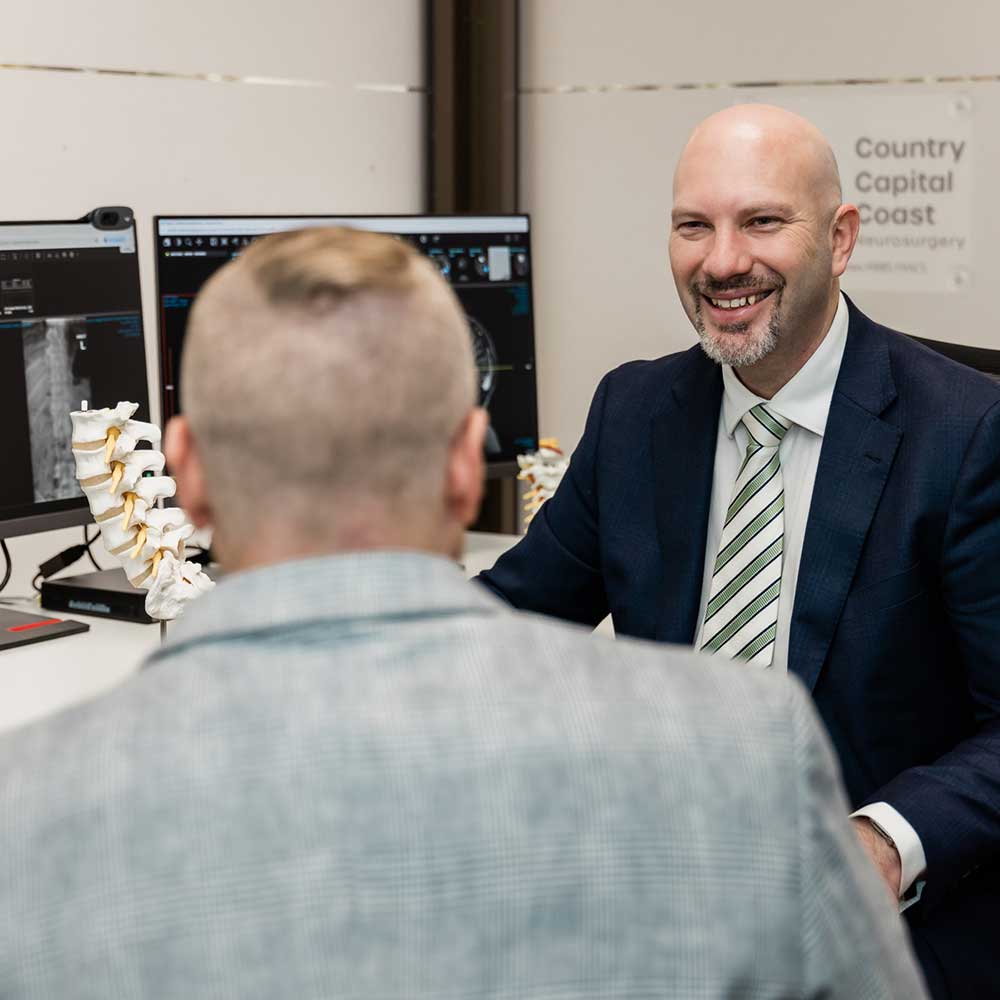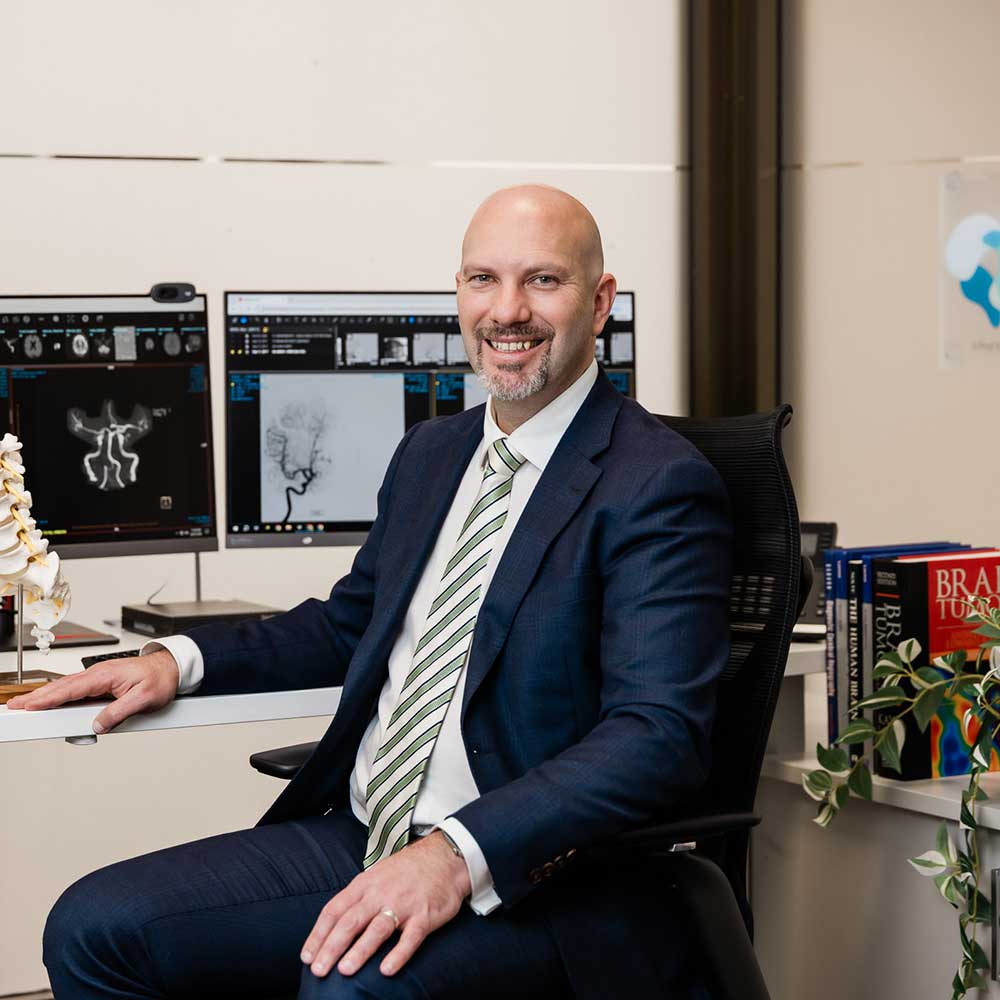In some cases, conservative measures such as physiotherapy or medication may be enough. However, when symptoms persist or progress, surgery may be the most effective treatment to restore function and quality of life.
A/Prof Peter Mews manages a range of peripheral nerve disorders, using advanced microsurgical techniques to relieve compression and preserve nerve function. By offering care in Canberra, Wagga Wagga and Moruya, he ensures patients across the region have access to specialist expertise without needing to travel interstate.
Carpal tunnel syndrome is the most common entrapment neuropathy, caused by compression of the median nerve as it passes through the wrist. In Australia, it is particularly common among women over 40 and those in manual occupations involving repetitive hand movements.
Causes:
Symptoms:
Treatment options:
Surgery has a high success rate, with most patients experiencing rapid relief of pain and gradual improvement in function.
Ulnar neuropathy occurs when the ulnar nerve becomes compressed, most commonly at the elbow (cubital tunnel syndrome). It can also occur at the wrist (Guyon’s canal).
Causes:
Symptoms:
Treatment options:
The common peroneal nerve wraps around the fibular head just below the knee, making it vulnerable to compression or injury. Damage can lead to “foot drop”, where the patient cannot lift the foot properly when walking.
Causes:
Symptoms:
Treatment options:
This condition occurs when the lateral femoral cutaneous nerve, which supplies sensation to the outer thigh, becomes compressed as it passes under the inguinal ligament.
Causes:
Symptoms:
Treatment options:
Thoracic outlet syndrome occurs when nerves of the brachial plexus are compressed as they pass between the collarbone and first rib. Neurogenic TOS is the most common type, though vascular forms can also occur.
Causes:
Symptoms:
Treatment options:



Peripheral nerve surgery requires precision, microsurgical skill, and a patient-focused approach. A/Prof Peter Mews brings advanced training in cranial and peripheral nerve disorders, along with broad neurosurgical expertise that allows him to manage both common and complex nerve conditions.
His regional practice locations in Canberra, Wagga Wagga and Moruya ensure patients have access to high-quality neurosurgical care close to home. For those living with pain, weakness or disability from nerve compression, timely specialist assessment can make a profound difference in restoring comfort, independence and quality of life.